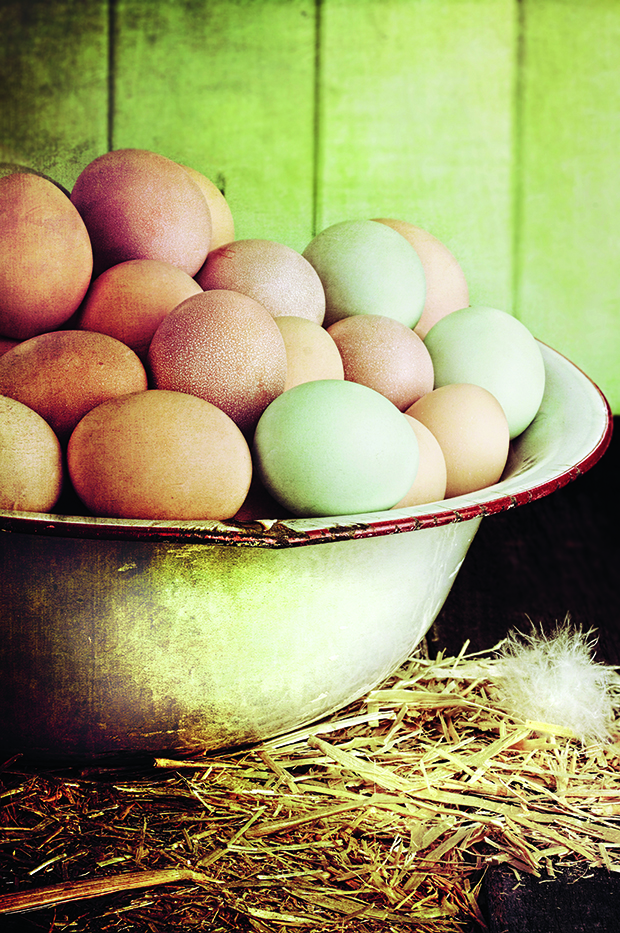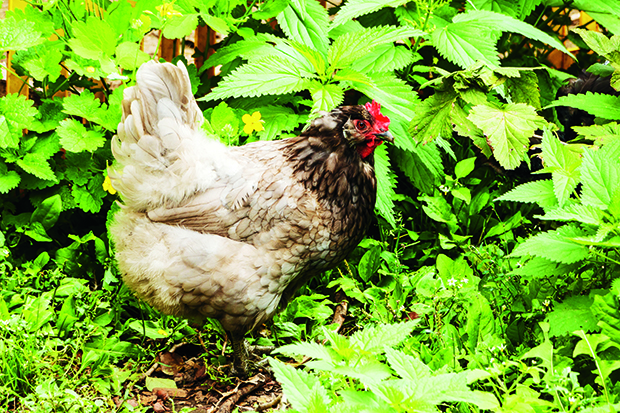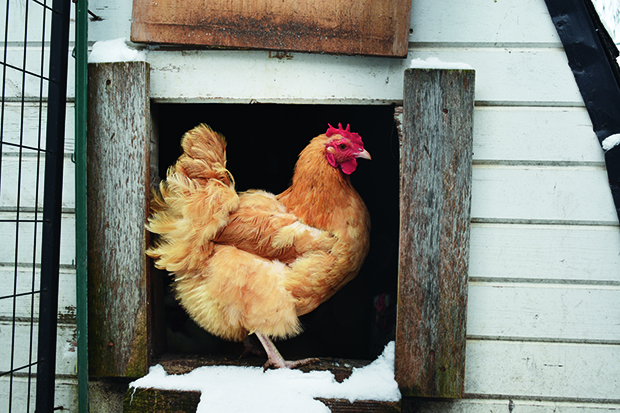Shells of many shades: Why eggs come in different colours

Pink, brown, green and blue – what is the science behind different eggshell colours?
Words: Michael Andrew
Out of all the poultry-related quandaries people have grappled with since the first fowl was domesticated, two questions have dominated all others. “Why did the chicken cross the road?” Closely followed by: “What came first – the chicken or the egg?” But the question that could arguably vie for third place, although not as philosophical, is no less fascinating: why do chickens lay different coloured eggs?
Most people are familiar with the brown and white eggs that come from domestic hens. The full colour spectrum, however, runs from blue through to green and all the way to pink and chocolate brown, with many shades in between.
The reason for this array has been the subject of much interest and speculation. Some believe brown eggs come from free-range hens and white eggs come from cage-bound hens, while others will say that the nutritional content and taste of an egg correlates with its shell colour.
In reality, egg colour is determined by the breed and therefore the genetics of the hen and has no bearing on flavour or nutrition. A good indication is a chicken’s ear lobes; typically fowl with white earlobes such as the Southern European breeds – Leghorns, Minorcas and Anconas – will produce white eggs. Breeds originating from North America and parts of Europe such as Light Sussex, Mottled Javas, Australorps, and Faverolles tend to have red ear lobes and lay eggs in shades of cream, beige and pink right through to very dark brown. Along with Ameraucanas and Cream Legbars, both the South American Araucanas and Silkie from Asia lay blue eggs. Heavy breeds such as Plymouth Rock, Wyandotte and the Orpington lay brown eggs while green eggs typically come from Easter Eggers: hybrids of unknown origins that can produce eggs in a variety of different colours.
HOW DO EGGS GET THEIR COLOUR?

The colour of eggshells is the result of a tussle between dominant and recessive genes over generations of breeding. But it all begins with a white eggshell, which is effectively the canvas on which the gene-defined pigment is deposited. The various breeds of Asiatic Jungle fowl – the forebears of our domestic fowl – laid white eggs; the result of a recessive gene. The colour blue, however, is the result of a dominant gene, which means if a blue egg breed like an Araucana mated to a white egg layer breed like a Leghorn, the pair would pass down the genetic information to their offspring, which would lay blue eggs, albeit paler than the pure blue-egged parent. Likewise, a brown egg layer mated to a blue-laying breed rooster would produce birds that lay olive green eggs.
The colour comes at some point during the 26-hour journey an egg takes through a hen’s oviduct, when it receives a pigment dictated by the parents’ genes. For instance, the blue pigment oocyanin will be deposited on eggs in Ameraucana birds early in the process, allowing the colour to permeate the exterior and interior surface of the shell. The pigment protoporphyrin will be deposited on the eggs of brown-laying birds just before leaving the oviduct, resulting in a shell that’s brown on the outside and white on the inside. The variation in shades can be controlled by up to 13 or more genes. In general, the shade of colour will depend on the amount of pigment, which can be influenced by other factors: the age of the bird, the month the egg is laid, and excess sunlight.
The origins of the coloured egg layers

Words: Sue Clarke
The original blue egg layer was the fowl associated with the Mapuche indigenous people of the Araucanía region in Chile, hence the name Araucana. The birds were first recorded in about the middle of the 16th century and their blue eggs are thought to have come about due to a genetic mutation.
Scientists at the University of Nottingham identified the mutation, which they linked to a harmless retrovirus: a virus that, unlike most cellular organisms, carries its genetic blueprint in the form of ribonucleic acid (RNA). It reproduces itself in a host cell using a special enzyme called “reverse transcriptase”, which transcribes RNA into deoxyribonucleic acid (DNA).
This makes it possible for genetic material from a retrovirus to become permanently incorporated into the DNA of an infected cell. In this case, the retrovirus’ effect was to trigger an accumulation of a green-blue bile pigment called biliverdin in the eggshell as the egg develops in the hen.
The Araucana as we know it today is a hybrid of two South American breeds: the Collonca (a naturally blue-egg laying, rumpless, clean-faced chicken) and the Quetros (a pinkish-brown egg layer that is tailed and has ear tufts). It was first introduced to fancy breeders worldwide in the middle of the 20th century. The first breed standards were introduced to the American Poultry Association as recently as 1976 and an improved version in 1984.
The term “Easter Egg” chicken is sometimes used to describe chickens of mixed or unknown parentage that are sold to the unwary as Araucanas because they lay unusual coloured eggs. Because the gene for blue eggs is dominant, it is passed on – sometimes in a diluted form if the parent is bred with a brown egg layer – to all the first cross offspring. However, that means many birds reported to be Araucana because they lay blue or green eggs may in fact be cross-breeds.
In the USA, the Ameraucana has a tail and the Araucana does not and is instead known as a rumpless fowl according to the American breed standard. They both have pea combs and lay blue or green eggs. However
the NZ standard for the Araucana requires them to have an “abundantly furnished tail”.
Love this story? Subscribe now!
 This article first appeared in NZ Lifestyle Block Magazine.
This article first appeared in NZ Lifestyle Block Magazine.
